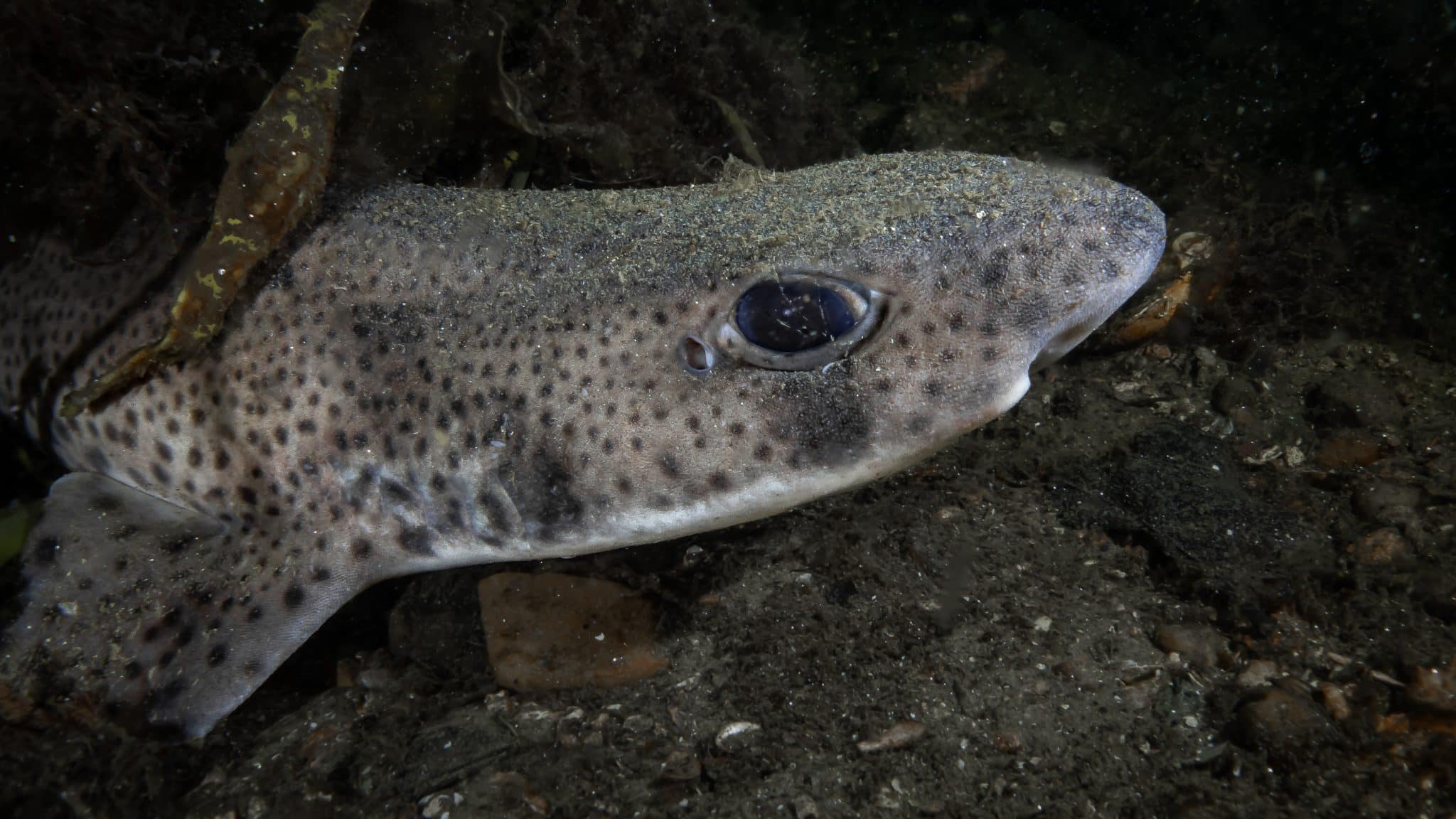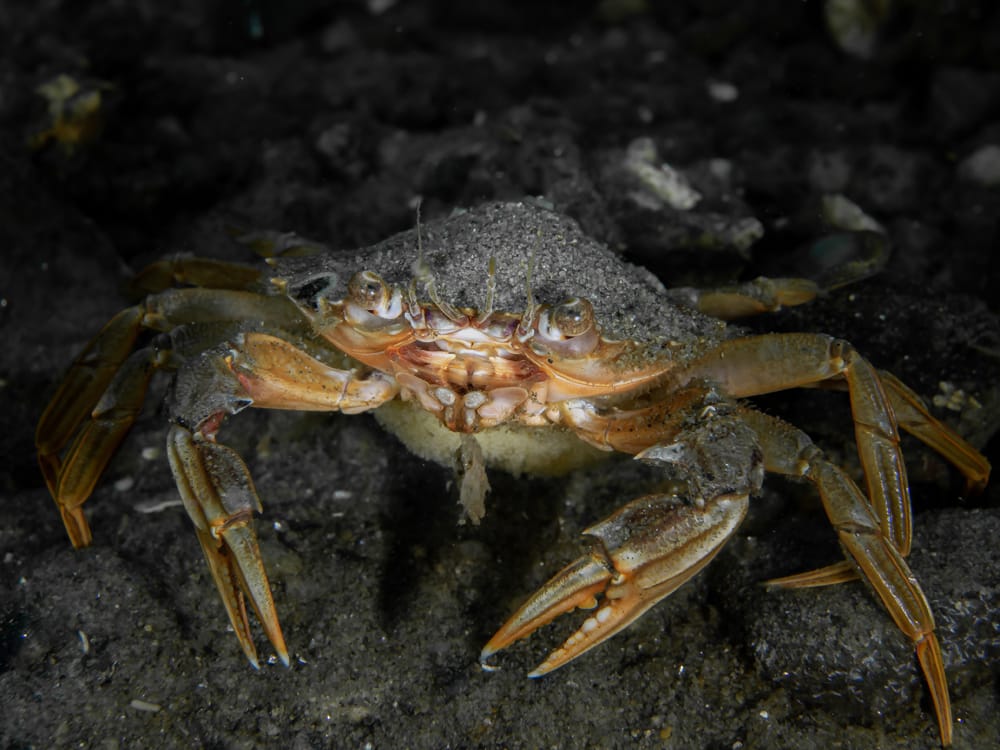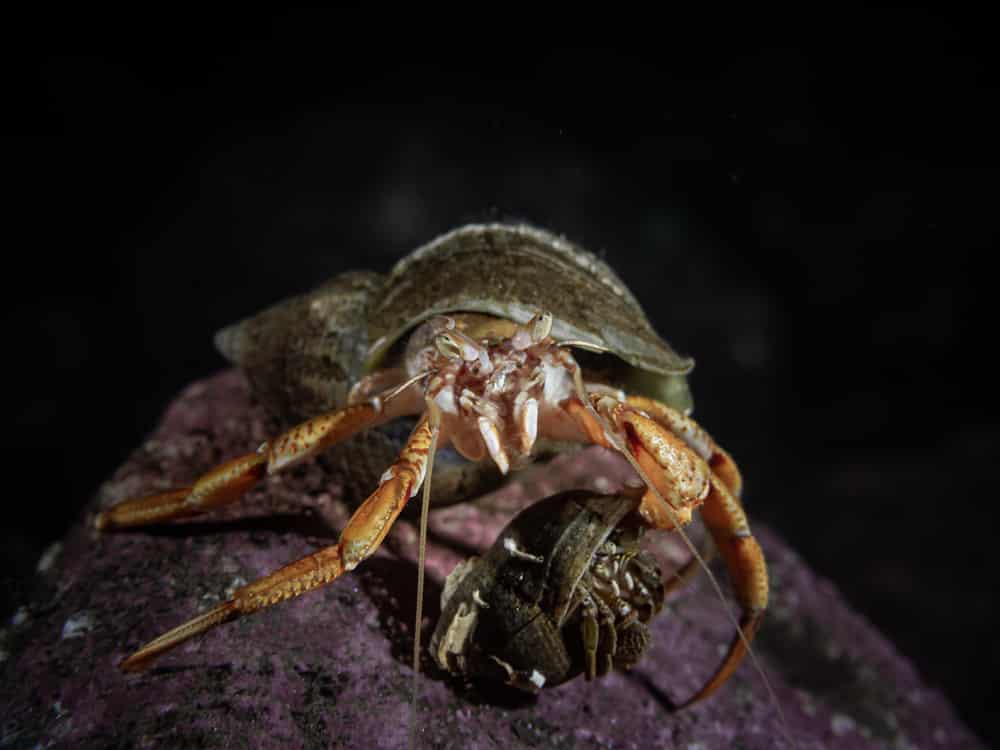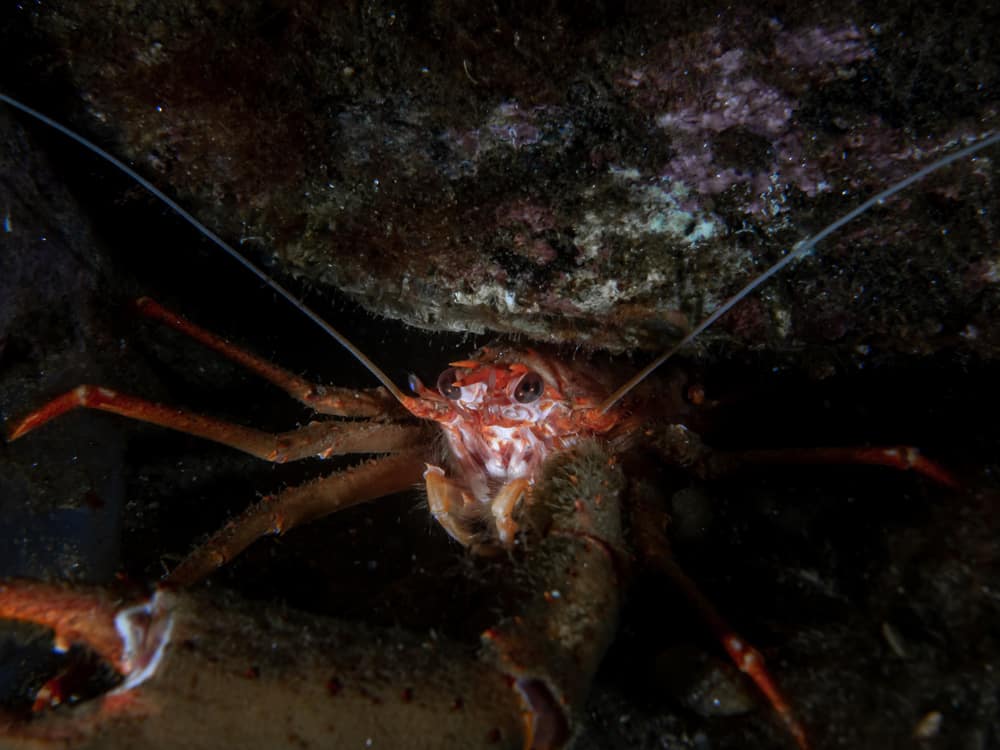News
Scotland Underwater: St Cats, Loch Fyne

The next in a series of blogs about Scotland Underwater from Ross Mclaren…
Loch Fyne on Scotland’s west coast is a sea loch probably most well-known for the incredible sea food that comes from it and is sold across the UK and Europe. At 70km long and with a maximum depth of around 200m, it’s also Scotland’s longest sea loch, which means… plenty of opportunity for diving.
Although maybe just pipped to the title of “Most Dived Loch in Scotland” by Loch Long just to the east, Loch Fyne is an ever-popular destination for divers throughout the country and even the UK. She may be slightly further away from the central belt and Glasgow than Loch Long, but it’s more than worth it.
Coming from Glasgow, you actually drive around the head of Loch Long, down her west bank under the shadow impressive Arrochar Alps before continuing to follow the A83 into the unbelievable Glen Croe. The views alone from the Rest and Be Thankful at the top of the Glen looking back on the road you’ve taken is worth the extra drive.
With twenty-two dives sites in the Loch (according to Finstrokes), I won’t even pretend I’ve dived them all, there is more than enough to whet the appetite of any and all divers.
Aside from Finnart (or A-Frames) on Loch Long, I don’t think there is another dive site in Scotland as popular as St Cats, on Finstrokes it’s listed as Seal Reef and some also call it St Catherines. The name might be up for discussion, but its popularity is most definitely not and once you’ve taken a wee dook underwater it’s easy to see why. With plenty of parking, and a pretty easy entry and exit point, it can be really busy during the summer months… but sadly, not just with divers! The good old Scottish midge also appears to very much appreciate the site as well and enjoys a wee buffet courtesy a la diver… you have been warned! However, the site is well worth braving our wee pests.
Now there’s two ways to dive St Cats. The “main” dive is straight forward to be honest. Once you’ve dropped beneath the surface head directly out from the shore you come to a “drop off”. It’s not a cliff per-say, but it’s a pretty obvious slope. At this point head down to around 8 to 10m and simply turn right keeping the incline on your right-hand side. This isn’t the main part of the dive, but don’t rush too fast, keep an eye out here for the odd dogfish hanging around the slope. Keep finning at about 10m and eventually you pick up the rocky reef. From this point it is totally up to yourself as to your depth. If you’re looking for a shallower dive simply keep swimming across the reef and take as long as you like looking under all the rocks, there’s plenty of life to find.
Now, I make no promises here, but the last few dive days we’ve had here has rewarded us with an absolutely magnificent lobster at the far side of the reef. Best way to find it would be to head down edge of the rocks once you first hit them to about 16 to 18m. At this point, swim straight across the reef until you come to the end of the boulders. There should be a rather large rock, with another propped up against it, and on the far side of it, at the bottom the home of Mr Lobster. But, be careful, the claws are big. If you’ve not found it by swimming straight across simply swim up and down the far side edge of the boulders and it shouldn’t be too hard to spot.
Personally, I always tend to follow the edge of the rocks down to steel wire which stretches right across the reef at about 16 to 20m, I’ve no idea what it’s from, but it makes for a really good navigation point during the dive. Most people tend to use this as the start of their zig zag exploration of the reef, but if you are looking for depth swim over the top of the wire and continue to follow the rocks down to your chosen depth. I’ve only ever been to around 40m, and although there isn’t much in the way of life, there has been fireworks anemone found at depth and even the odd cuttlefish/bobtail squid. I’m not going to lie; this is the one and only time I’ve seen one during a dive and being around 37m at the time I did wonder if I was narked. I still like a wee look down deeper just on the off chance I come across it again… cause you know, obviously it hasn’t moved in the past year or so… one can dream.
Regardless of the depth you chose the dive itself is the same. Simply zig zag your way back up the reef taking your time. The rocks are absolutely teeming in life and there’s very often the odd lobster hiding away. Once you’re done exploring simply head back to the edge of the reef, now keeping the slope on your left at about 10m again and the fin back for about the same time it took you to reach the boulders and your back to the entry point. It’s as easy as that!
Now, if you are looking for something a wee bit different there is actually a “wreck” of a speed boat in the opposite direction to the reef. Many people will give compass bearings etc. to reach it, but I’ve found the easiest way to find it is to simply swim straight out and down from the entry point and head to around 18 to 22m. From here turn left keeping the slope on your left-hand side. Have your buddy swim at around 17m and you at about 21m (if visibility allows for it) and simply start finning until you come across it. Depending on your fin strokes, you should hit the wreck after about 4 to 7mins. The detour from the “main” dive to visit the speedboat is well worth it. The “wreck” is pretty much intact, though the seats seem to have miraculously detached themselves, and is now home to scores of squat lobsters, anemones and at one time a rather large “Ling”. Sadly, at some point over the last year or so, we think, someone has used the boat as practice for lift bags and actually turned the whole thing 1800 and in the process it would appear they’ve scared off the ling, which I’ll be honest is rather infuriating! My suggestion for taking in the speedboat is to do this first, once you’re finished exploring the “wreck”, head up the slope to a shallower depth and then head back along it keeping it on your right hand side. This will take you back to the entrance, however if gas/dive plan allows you can continue along to the “main” reef and do a slightly shallower zig zag checking out the boulders once again.
St Cats/Seal Reef/St Catherine’s is probably overlooked by many of us divers who regularly dive the sea lochs. We can be guilty of passing it off as just a “good training site”. But, it does offer a lot for most divers and in fact, with it’s nice little beach and secluded parking off of the main road, also makes it good for non-diving friends and family as well. It’s often used by local clubs and groups as a small campsite for those who fancy spending the weekend.
For more from Ross, follow him on Instagram @underwater.ross and on Twitter @outdoorsross.
Blogs
The Ocean Cleanup Breaks 10,000,000 KG Barrier

The Ocean Cleanup, the global non-profit project, has removed a verified all-time total of ten million kilograms (22 million lbs.) of trash from oceans and rivers around the world – approximately the same weight as the Eiffel Tower.
To complete its mission of ridding the oceans of plastic, The Ocean Cleanup uses a dual strategy: cleaning up the Great Pacific Garbage Patch (GPGP) to remove the plastic already afloat in the oceans, while stopping the flow of plastic from the world’s most polluting rivers.
Through cleaning operations in the GPGP and in rivers in eight countries, the cumulative total of trash removed has now surpassed ten million kilograms. This milestone demonstrates the acceleration of The Ocean Cleanup’s impact, while underlining the astonishing scale of the plastic pollution problem and the need for continued support and action.
While encouraging for the mission, this milestone is only a staging point: millions more tons of plastic still pollute our oceans and The Ocean Cleanup intends to continue learning, improving and innovating to solve this global catastrophe.
This announcement comes as governments from around the world meet to continue negotiations to develop a new legally binding instrument to end plastic pollution at INC4 in Ottawa, Canada. Representatives of The Ocean Cleanup will be in attendance and the organization will be urging decision-makers to collaborate towards a comprehensive and ambitious global treaty which addresses plastic at all stages of its life cycle and in all marine environments worldwide, including in areas beyond national jurisdiction.
It is encouraging to see that the need for remediation is reflected in the various options for potential treaty provisions. It is essential that the final treaty contains clear targets for the remediation of legacy plastic pollution, and reduction of riverine plastic emissions.
Tackling plastic pollution requires innovative and impactful solutions. The treaty should therefore incentivize the innovation ecosystem by fostering innovations that make maximal use of data, technology and scientific knowledge – such as those designed and deployed by The Ocean Cleanup.
‘After many tough years of trial and error, it’s amazing to see our work is starting to pay off – and I am proud of the team who has brought us to this point.’ said Boyan Slat, Founder and CEO of The Ocean Cleanup. ‘While we still have a long way to go, our recent successes fill us with renewed confidence that the oceans can be cleaned.’
The Ocean Cleanup was founded in 2013 and captured its first plastic in 2019, with the first confirmed catch in the GPGP coming soon after the deployment of Interceptor 001 in Jakarta, Indonesia. After surpassing one million kilograms of trash removed in early 2022, the non-profit project has since progressed to the third iteration of its GPGP cleaning solution, known as System 03, and a network of Interceptors currently covering rivers in eight countries, with more deployments set for 2024.
About The Ocean Cleanup
The Ocean Cleanup is an international non-profit organization that develops and scales technologies to rid the world’s oceans of plastic. They aim to achieve this goal through a dual strategy: stemming the inflow via rivers and cleaning up the legacy plastic that has already accumulated in the ocean. For the latter, The Ocean Cleanup develops large-scale systems to efficiently concentrate the plastic for periodic removal. This plastic is tracked and traced through DNV’s chain of custody model to certify claims of origin when recycling it into new products. To curb the tide via rivers, The Ocean Cleanup has developed Interceptor™ solutions to halt and extract riverine plastic before it reaches the ocean. Founded in 2013 by Boyan Slat, The Ocean Cleanup now employs a broadly multi-disciplined team of approximately 140. The foundation is headquartered in Rotterdam, the Netherlands.
For more information, visit: theoceancleanup.com and follow @theoceancleanup on social media.
Marine Life & Conservation
Steve Backshall to headline Shark Trust’s flagship event: For the Love of Sharks

Join a host of amazing, shark loving, speakers including Steve Backshall and the Shark Trust team for an evening celebrating shark conservation at the Royal Geographical Society in London this November.
Date: 29th November 2024
Time: 6-10pm
Location: Royal Geographical Society, London
Tickets: https://www.sharktrust.org/Event/flos24
The event will be a celebration of all things shark. Those lucky enough to get hold of tickets will hear from engaging guest speakers with a passion for sharks.
The line-up includes (*subject to change if unforeseen circumstances arise)
Steve Backshall: One of television’s busiest presenters, BAFTA award-winning wildlife expert Steve has been passionate about the wild world ever since he was young.
Steve’s impressive TV career has taken him all around the world, investigating a wide array of species and environments. Steve has filmed over 100 hours of children’s wildlife programmes with the BAFTA award winning Deadly 60 franchise and recently, with Sky Nature, for his new series ‘Whale with Steve Backshall’. He has been a patron for the Shark Trust for 10 years.
Simon Rogerson: is a photojournalist specialising in natural history, diving and the sea.
He is editor of SCUBA magazine, the official journal of the British Sub-Aqua Club. Simon started his career as a crime reporter but gravitated towards his ‘less depressing’ interest in underwater exploration, joining the staff of DIVE magazine in 1999. In 2005 he was named ‘Editor of the Year’ in the PPA’s Independent Publishing Awards. Simon also works as a freelance writer, contributing frequently to the Sunday Times and Telegraph, in addition to BBC Wildlife, Esquire, and a host of international diving magazines. He is the author of a book, Dive Red Sea, published by Ultimate Sports. Now based in Berkshire, Simon has been a Patron of the Shark Trust for 20 years.
More speakers to be announced soon. Head to the Shark Trust website to learn more.
The evening will also allow guests the final chance to see the Oceanic 31, shark art exhibition. Some of the artwork will be auctioned/raffled at the event, while the rest will be auctioned online to raise money for the Shark Trust Oceanic Programme.
For the Love of Sharks is an evening with something for everyone who is interested and fascinated by sharks. Join the Shark Trust, their Patrons, Trustees and Staff, along with a host of supporters for this celebration of shark conservation.
For more information or to buy a ticket: https://www.sharktrust.org/Event/flos24
-

 News3 months ago
News3 months agoHone your underwater photography skills with Alphamarine Photography at Red Sea Diving Safari in March
-

 News3 months ago
News3 months agoCapturing Critters in Lembeh Underwater Photography Workshop 2024: Event Roundup
-

 Marine Life & Conservation Blogs3 months ago
Marine Life & Conservation Blogs3 months agoCreature Feature: Swell Sharks
-

 Blogs2 months ago
Blogs2 months agoMurex Resorts: Passport to Paradise!
-

 Blogs2 months ago
Blogs2 months agoDiver Discovering Whale Skeletons Beneath Ice Judged World’s Best Underwater Photograph
-

 Gear Reviews3 weeks ago
Gear Reviews3 weeks agoGEAR REVIEW – Revolutionising Diving Comfort: The Sharkskin T2 Chillproof Suit
-

 Gear Reviews3 months ago
Gear Reviews3 months agoGear Review: Oceanic+ Dive Housing for iPhone
-

 Marine Life & Conservation2 months ago
Marine Life & Conservation2 months agoSave the Manatee Club launches brand new webcams at Silver Springs State Park, Florida























